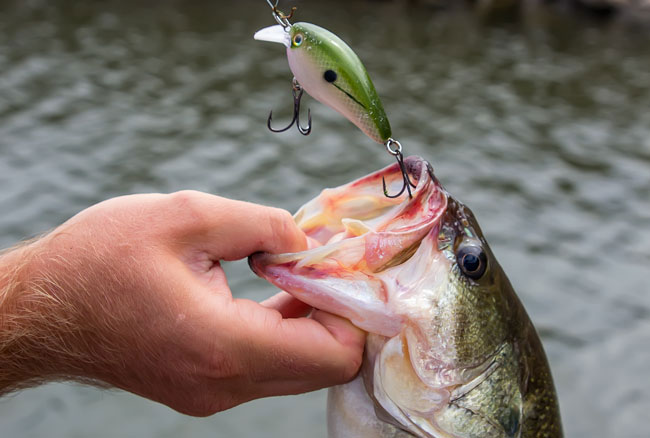A Guide to Spring Fishing
With spring just around the corner, it is time to start thinking about the upcoming bass fishing season. It is important to keep in mind that in the early spring, the bass are just emerging from their winter state, which is similar to hibernation, so you should not expect to catch a lot of fish during this time of year. The important thing is to not give up early in the season because when you do finally catch one, the payoff can be enormous.
One important aspect of fishing that is often overlooked is your rod and reel setup. In the early spring, because less vegetation is present and topwater bites are rare, I recommend using a medium to medium-heavy rod. These rod strengths are most versatile because they can be used all year round since most lures weigh between 1/4 ounce and 3/4 ounce. When choosing a reel, a baitcaster setup is optimal because it not only provides a more precise cast but also a farther cast than a spinning setup. In the early spring, because the fish are still “waking” from their winter slumber, most baits do not need to move extremely fast for their presentation, so a medium gear ratio of 5.4:1 to 7.5:1 is better.
Another important aspect of fishing that is commonly forgotten is line. This is what directly connects you to the fish. Therefore, you should not buy the cheapest line you can find. Also, if you are using a reel with line from the previous fishing season, you should probably invest in some new line because the worst thing that can happen is losing a fish when your line breaks after spending all day without many bites. In the early spring, the water will be very clear and without much vegetation, so I recommend using either fluorocarbon or monofilament line because they are both clear in color. I would refrain from using braid, even thinner braid (around 15 pound), because all braid creates some color contrast with the surroundings can be seen by the bass. Ultimately, fluorocarbon is the best type of line to use in early spring conditions because of its invisibility underwater, density and smaller diameter. Although fluorocarbon is optimal, it is much more expensive than monofilament and is harder to spool on your reel and cast with. In sum, I recommend you use 8-15 pound test monofilament or fluorocarbon line in early spring.
In the early spring, when the water is just starting to warm up, it is important to keep in mind that the bass are quite sluggish. This means that you should choose a bait that is oriented towards a reaction strike. A reaction strike is the response a bass makes to a lure out of aggression or in response to a perceived threat. In the early spring, bass will not follow a lure for an extended period of time because they do not want to exert much energy, and they need to eat a large quantity of food before the spawning season. Some baits that are great at causing reaction strikes are jerkbaits, crankbaits and jigs. In the early spring, it is best to use a jerkbait or crankbait in deeper water that has rocky ledges. Optimally, the depth of water should range between 6 and 12 feet, and you should choose a crankbait or jerkbait that will reach the depth of the rocks so your bait will hit and bounce off the rocks, causing noise, vibrations and ultimately a reaction strike. When using a jig in the early spring, it is important to cast towards either light vegetation or rocky drop-offs. You can either bounce the jig off the rocks, creating a lot of noise and vibrations, or you can slowly walk the jig through light vegetation or rocky flats. While a variety of other baits may work as well, these are the baits that I have had great success with in the past.
I hope these tips can help you catch a boatful of bass this early spring season. Keep an eye out for a follow up article explaining how to fish in late spring during prespawn, spawn and post spawn.








